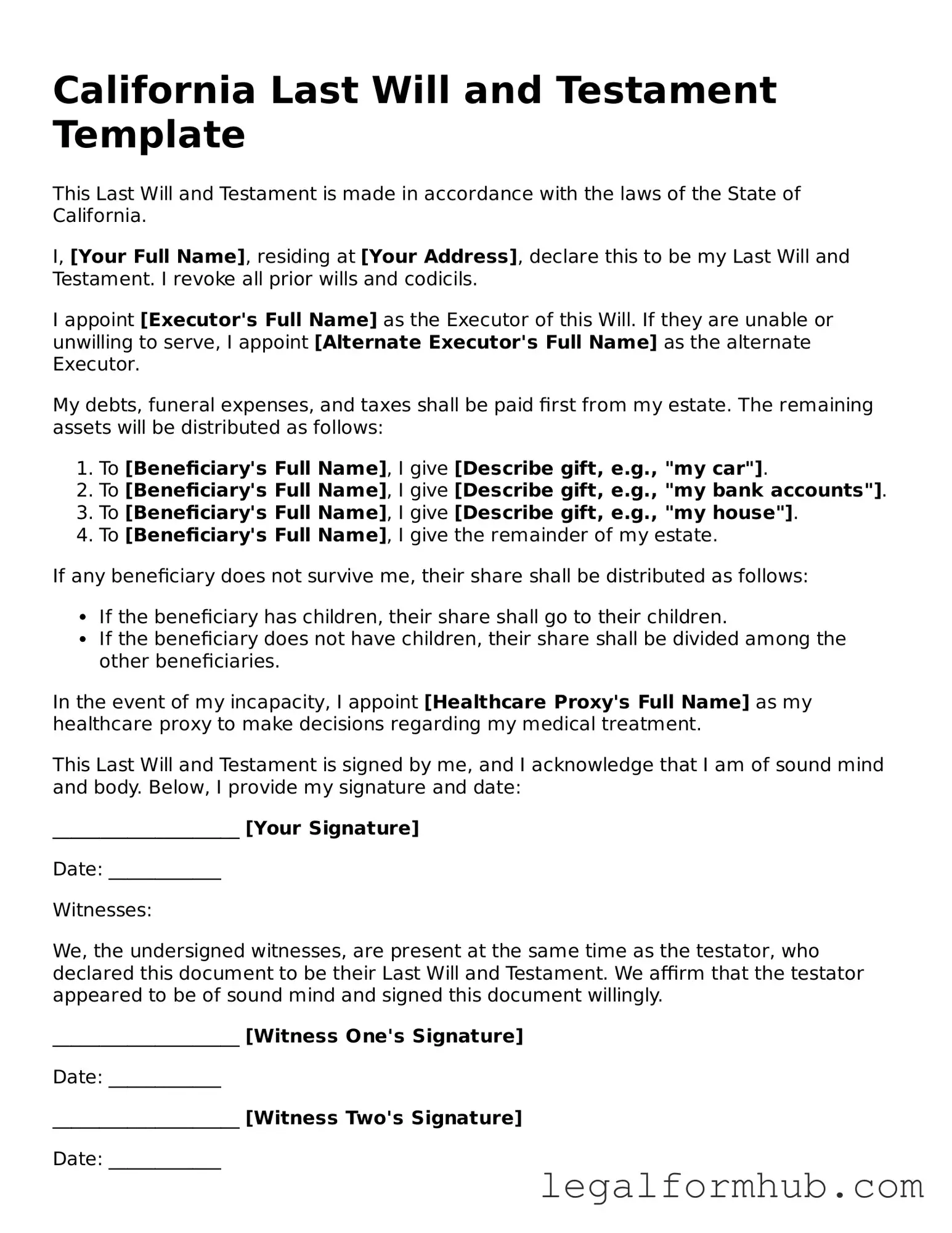A Living Will is a document that outlines a person's wishes regarding medical treatment in the event they become incapacitated. Unlike a Last Will and Testament, which deals with the distribution of assets after death, a Living Will focuses on healthcare decisions. It allows individuals to specify what types of medical interventions they do or do not want, ensuring their preferences are honored when they cannot communicate them directly.
A Durable Power of Attorney is similar in that it grants someone the authority to make decisions on behalf of another person. This document is particularly important for financial matters. While a Last Will and Testament only takes effect after death, a Durable Power of Attorney is active during the person’s lifetime, allowing the designated agent to manage financial affairs if the individual is unable to do so.
A Health Care Proxy is another document that is closely related. It designates a specific person to make medical decisions on behalf of someone else when they are unable to do so. This document works alongside a Living Will. While the Living Will expresses personal wishes regarding treatment, the Health Care Proxy appoints someone to interpret and act on those wishes, providing a clear line of authority.
A Trust is a legal arrangement where one party holds property for the benefit of another. Trusts can be used to manage assets during a person's lifetime and after death. Unlike a Last Will and Testament, which goes through probate, a Trust can help avoid this process, making it a quicker and often less expensive option for asset distribution. Trusts can also provide more privacy since they do not become public records.
A Codicil is a document that allows a person to make changes to an existing Last Will and Testament. This can include adding or removing beneficiaries, changing the executor, or modifying specific bequests. A Codicil must be executed with the same formalities as a Last Will to ensure its validity, making it a convenient way to update an estate plan without creating an entirely new will.
A Power of Attorney (POA) form in Arizona is essential for individuals wishing to secure their healthcare and financial decisions. This legal document allows a person to appoint another individual to act on their behalf, which can be vital in situations where one may become incapacitated. For those interested in a more comprehensive understanding of how to create this document, further details can be found at https://arizonapdfs.com/power-of-attorney-template.
An Advance Directive combines elements of a Living Will and a Health Care Proxy. This document provides instructions for medical care and appoints someone to make decisions if the individual is unable to do so. It ensures that both personal wishes and decision-making authority are clearly outlined, making it easier for loved ones and healthcare providers to follow the individual's preferences.
A Guardianship document is essential for parents who want to designate a guardian for their minor children in the event of their death. This document ensures that children are cared for by someone the parents trust. While a Last Will addresses asset distribution, a Guardianship document focuses on the welfare and upbringing of dependents, making it a crucial part of family planning.
A Prenuptial Agreement is a contract entered into before marriage that outlines the division of assets in the event of divorce. While it serves a different purpose than a Last Will, both documents deal with the distribution of property and assets. A Prenuptial Agreement can help clarify financial responsibilities and expectations, providing peace of mind for both parties.
An Estate Plan is a broader term that encompasses various documents, including a Last Will and Testament, trusts, and powers of attorney. An Estate Plan aims to manage an individual's assets during their lifetime and after death. It ensures that a person's wishes are carried out and can help minimize taxes and legal complications, providing a comprehensive approach to financial and healthcare decisions.
